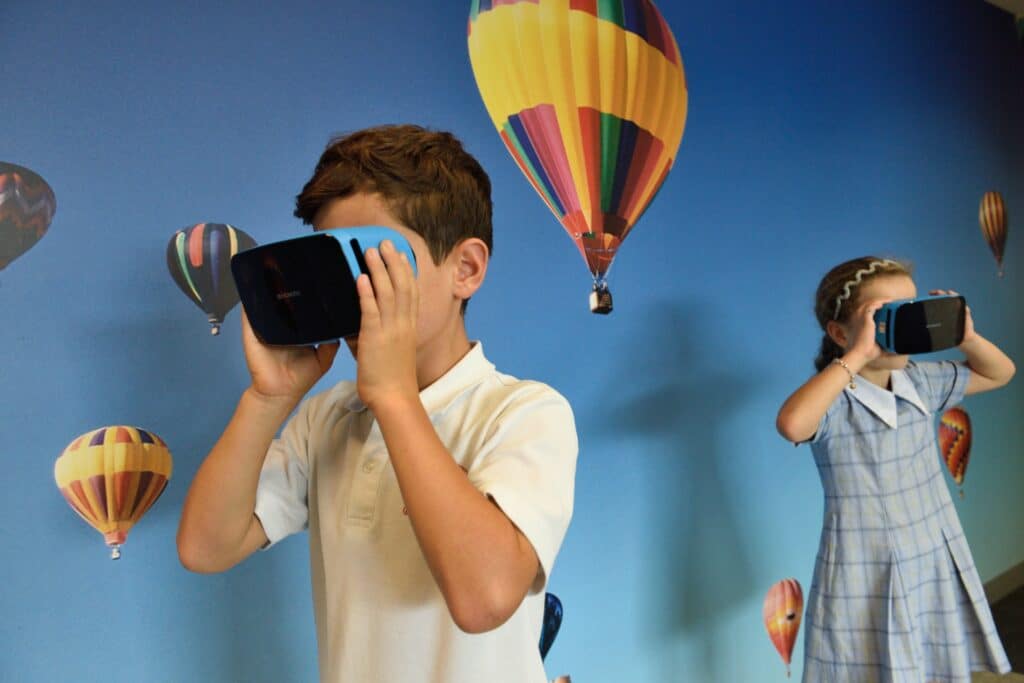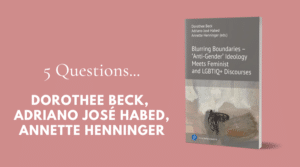When one Wants More than the Other: Multi-Professional Cooperation between Staff in Extended Education and Teachers
Jasmin Näpfli, Kirsten Schweinberger
IJREE – International Journal for Research on Extended Education, Issue 2-2022, pp. 40-52
Abstract: In 2021 the Swiss Teachers’ Association (LCH) demanded that extended education offerings (EEO) should be the responsibility of schools and not outsourced, which in turn also implies a new cooperation partner for the schools. Till today not much is known about this cooperation. This study investigates this cooperation from the perspective of the cooperation partners – the teachers (N=233), school leaders (N=64), staff (N=349) and leaders (N=67) of the EEO by means of a quantitative survey in a pioneering canton in Switzerland. The findings show that cooperation is rated as “good”—but for different reasons—by the cooperation partners and that cooperation is linked to job satisfaction.
Keywords: cooperation, teacher, staff of extended education offerings, job satisfaction
Introduction
For some years now extended education has been expanding in Switzerland. This has been triggered by societal developments such as demographic change, changes in the labour market and family structures as well as the sobering PISA results (Schuepbach et al., 2017; Schuepbach, 2018a). The expansion of extended education is not a unique feature of the Swiss education system or of other European countries such as, for example, Germany (Kunze & Reh, 2020; Mattes & Reh, 2020) or Sweden (Klerfelt & Stecher, 2018). In fact, it is flourishing all over the world (Bae, 2018). Expectations associated with this expansion are high, ranging from improved equity, inclusion and educational outcomes to a better work-life balance (Herzog, 2009). However, studies show that extended education in its current form does not always have the expected effect (Sauerwein et al., 2019; Schuepbach et al., 2012) and that the effects that do occur depend on its quality and its structure (e. g. its linkage to the school) (Zuechner & Fischer, 2014). If the EEO is more closely linked to the school a higher degree of cooperation and participation occurs (Forrer Kasteel & Schuler, 2010) and the EEO can contribute even more to equal opportunities, as more time is available, to support (disadvantaged) children in the integration and educational development. EEO represents a different learning arrangement and allows children to be perceived differently than in school, thus enabling a more “holistic perception” of the child (Lago & Elvstrand, 2019; Näpfli & Strittmatter, 2021).
In Switzerland the cantons and municipalities are responsible for implementing EEO, and therefore a multitude of structurally different offerings can be identified, the different emphases of which are also expressed in the various terms used (Schuepbach, 2018b). We will follow the proposition of Schuepbach et al. (2017, p. 58) and will consequently use the term “extended education offerings”. The Swiss Teachers’ Association describes the advancement and expansion of EEO as one of the most significant current developments in the Swiss education system alongside the introduction of inclusive education and digital transformation (LCH, 2021). The LCH demands that EEO should be the responsibility of schools in terms of both content and organization and that together they should form a “school living space”. If the EEO are organized by others then the school the quality of EEO can’t be (equally) guaranteed and a systematic coupling of the two systems isn’t possible (LCH, 2021) which are, as mentioned before, both key conditions for the EEO’s effect (Chiapparini et al., 2018; LCH, 2021).
With the increasing importance of learning in extracurricular and out-of-school educational contexts (Kielblock, et al., 2020), multi-professional cooperation is becoming crucial (Olk et al., 2011) and an essential requirement for successful school development, especially in the implementation of all-day schools ( Jutzi et al., 2016; Jutzi & Woodland, 2019; Maag Merki, 2015) and in the discourse on school quality (Fend, 2006; Speck et al., 2011). Even though regular teaching and EEO are usually considered as two distinctive organisations, EEO often serve as a bridge between home and school for children and their parents, which is another reason why cooperation between the two organisations is essential.
Findings on teacher cooperation indicate that teachers who do cooperate are less stressed and report higher job satisfaction, as cooperation is seen as a reflection of the social climate in school (Olsen & Huang, 2019; Toropova et al., 2021). Notwithstanding the higher levels of difficulty in multi-professional collaboration, Valentin, Fischer, and Kuhn (2019) demonstrate that aspiring professionals can be taught to understand collaboration as a form of professional and emotional support and to recognize the benefits of collaboration for improving school and classroom practice.
To date there has been little research on multi-professional cooperation between teachers and staff of EEO in Switzerland and there is a particular need for further research on opportunities for multi-professional cooperation (Schuler et al., 2019, p. 94; Boehm-Kaspar et al., 2016). Initial findings suggest that a lack of understanding of the other profession is an impeding factor for symmetrical professional collaboration in Switzerland (Schuler Braunschweig et al., 2019).
This study investigates multi-professional cooperation between teachers at primary schools and the staff engaged in EEO in a pioneering canton in Switzerland. Results from teacher cooperation shows that cooperation is linked to job satisfaction. We would like to find out whether this effect can also be found in multi-professional cooperation settings. Higher job satisfaction and the accompanying lower turnover rate would lead to lasting relationships between children and the staff of EEO, which also has an influence on the well-being of the children (Bloechliger&Bauer, 2016). So, this study examines the relationship between multiprofessional cooperation and job satisfaction.
Context of the Study and the Situation in Switzerland
The education system in Switzerland is federally governed, and the 26 cantons are responsible for the schools. So, not surprisingly, there are no national guidelines on the organization of EEO. There is only an obligation that all cantons provide “a demand-oriented offer for the care of pupils outside regular school time” (EDK, 2007, § 11, sect. 2). Some cantons, namely, those pioneering cantons in extended education, regulate the EEO in their laws governing cantonal public schools (Schuepbach & von Allmen, 2013, p. 19). Other cantons regulate extended education offerings in their cantonal social services laws. The state of EEO in Switzerland is therefore heterogeneous: they can be compulsory, meaning that all pupils attend certain EEO time slots in addition to regular hours of school instruction, or they can be non-compulsory, meaning that parents can choose from different modules. Another distinguishing feature is whether the school itself or other providers are responsible for the organisation of the EEO (BFS, 2020). This has an impact on the location of EEO (Schuepbach, 2014) and on the cooperation between schools and EEO. Thus, the degree of cooperation between schools and EEO differs from canton to canton. Some are already close to fulfilling the demands made by the LCH whereas in other cantons, no fields of cooperation have been regulated.
The canton studied is one of the pioneering cantons in Switzerland in the field of EEO. The focus of the EEO is on social skills and is leisure-oriented, but homework support is also becoming increasingly important. Opportunities for cooperation arise especially in homework support, but also in jointly planned and implemented projects. Parents can choose different time slots (modules) for their children to attend, which means it is not compulsory even if at least four fixed modules must be chosen for one year. In this canton the school comprises EEO and regular classroom teaching. Therefore, the concept of “school” is expanded from a focus exclusively on teaching to include EEO. As part of the school, the EEO are also the responsibility of the school principal but have their own EEO leader. A hierarchical structure is therefore created linking the EEO and the teaching domain. Cooperation between the two domains and its implementation must be laid down in the guidelines of the school. So even if it is a non-compulsory offering – our data stem from a canton which regulates cooperation between the teaching domain and EEO – it already fulfils the demands made by the LCH (2021).
Review of Literature
We will first take a brief look at the definitions of collaboration and cooperation. Then we will review findings on cooperation in school and finally look at the cooperation between EEO and teachers.
Cooperation and Collaboration – a brief Look at Definitions
Roschelle and Teasley (1995, p. 70) describe cooperative work as a task that is accomplished by dividing it among participants, where “each person is responsible for a portion of the problem solving,” and they see collaborative work as “the mutual engagement of participants in a coordinated effort to solve the problem together”. In their widely used cooperation model Graesel et al. (2006) distinguish between three levels of cooperation. The first level, exchange, means that information and materials are exchanged. The second level, division of labour, implies a need to coordinate goals and responsibilities in completing the common task. The third level of cooperation is co-construction where the cooperation partners profitably combine their knowledge and skills (Graesel, et al., 2006). According to Spiess (2018), successful cooperation requires that the cooperation partners agree on goals, exchange information and support each other and can thus develop mutual trust while maintaining a certain degree of autonomy. On examining these different definitions, collaboration seems to be what Spiess (2018) calls a successful cooperation and what, in the model of Graesel et al. (2006) is called co-construction. We further use the term cooperation as it fits for the different forms and intensity of collaborative working.
Cooperation in Schools and its Effects
Conditions for successful cooperation as well as the expected effects for teacher and multiprofessional cooperation are similar, but differences can be found: the cooperation partners in multi-professional cooperation differ in profession and thus in terms of their goals and roles. Differences in training standards, socialization and salaries are additional challenges that further influence the success of multi-professional cooperation. Therefore, crucial conditions for successful multi-professional cooperation are: clarity of goals, roles and tasks as well as individual attitudes towards and perceptions of cooperation (Luetje-Klose & Urban, 2014; Wichmann, 2014).
* * *
 Would you like to continue reading? This article was published in issue 2-2022 of IJREE – International Journal for Research on Extended Education.
Would you like to continue reading? This article was published in issue 2-2022 of IJREE – International Journal for Research on Extended Education.
© Unsplash 2023 / image: stem.T4L

